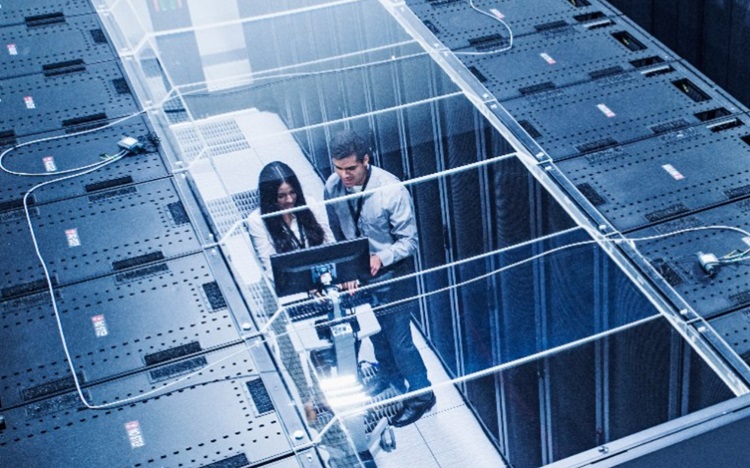Together, Intel and Dell Technologies continue to enable innovations that improve lives, increase productivity and unleash creativity. With every generation of processors, energy efficiency is increasing: more computations can be performed per watt of electricity needed by the servers. However, the demand for compute performance is insatiable, leading to processors being designed to run at higher wattages to meet the performance demand.
Cooling these higher thermal design power (TDP) processors becomes a challenge from both a technology and energy consumption standpoint. Traditional cooling systems, which consume up to 40% of a data center’s energy consumption, weren’t designed to eliminate the higher amount of heat generated. Cooling the data center through immersion technology enables cooling higher TDP parts while being more sustainable through reduced electricity (and water) consumption.
In this blog series, we will present sustainable approaches to deploying the latest in compute architectures using different cooling techniques. One way to improve sustainability is to reduce the amount of cooling needed in the data center space. We can see how to do this by considering how heat moves and how that drives cooling equipment in the data center. Heat moves from hot to cold, and the more heat that needs to be moved, the larger the temperature difference between the hot and cold needs to be. In the case of computers, one of the most important “hot” parts is the processor, while the “cold” part is the air around the data center where we want to release the heat. If the temperature difference between the processor and the outside air is not large enough, we need to use refrigeration compressors to create a bigger temperature difference. These compressors require more energy than pumps and fans by themselves, so our goal is to make the data center cooling so effective that we don’t need the compressors all or most of the time.
One of the cooling technologies that could improve data center energy use is immersion cooling. In this technology, the servers are submerged in a liquid that won’t conduct electricity and is compatible with the components in the computer. There are no fans in the server, which alone saves data center power. There is no need to move large amounts of air in the data center facility, as immersion tanks typically collect nearly all of the heat from the compute directly into the liquid. Because the heat is captured by the fluid within the immersion tanks, there are additional savings at the facility level with the elimination of facility fans that would deliver air to the cold aisle in front of the racks in an air-cooled data center. Compressors may be removed from the cooling system in some cases, compounding the energy savings. With some compute configurations, the hot coolant leaving the compute may even be useful for other applications, like district heating or industrial processes.
One of the key challenges facing the technology is that the thermal performance of current immersion systems can be limiting for some processors and servers. However, Intel and Dell have combined to maximize the opportunities to deploy sustainable compute in immersion. Intel Xeon processors, such as the Xeon Platinum 8480+ or the Xeon Platinum 8470N, let users take advantage of the latest Intel compute architecture, built-in accelerators and security features for greater performance. These processors are also more efficient than previous generations, providing an average 2.9x better performance per watt across a variety of workloads. With more built-in accelerators than any other CPU on the market, 5th Gen Intel® Xeon® Scalable processors deliver outsized performance and total cost of ownership for AI, database, networking and HPC workloads. You can see up to 10x higher performance per watt using built-in accelerators on targeted workloads. These processors are also higher in TDP, which Dell has mitigated through new Dell PowerEdge server features for immersion cooling. With Dell’s PowerEdge Smart Cooling features, including symmetric layout and streamlined flow paths for immersion liquid, systems can be cooled more effectively. With coolant flowing efficiently around the hottest components, energy savings of up to 30% can be achieved over traditional perimeter air cooling for comparable servers and configurations, according to internal Dell modeling.
Source: dell.com





0 comments:
Post a Comment